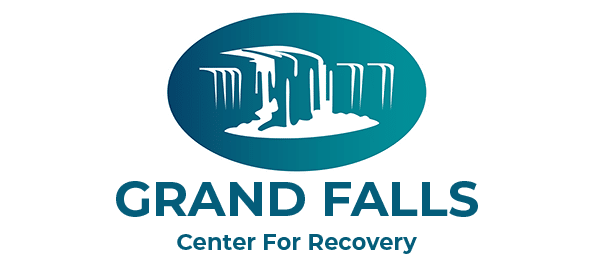M367 prescriptions have skyrocketed in recent years, with over 30 million Americans misusing this prescription opioid in 2020 alone. This highly addictive drug works by binding to opioid receptors in the brain that regulate pain and pleasure. While M367 can provide effective short-term pain relief, long-term use carries serious risks of addiction, overdose, and death.
We will examine M367 from a therapy perspective, analyzing the science behind opioid addiction and key risk factors. We’ll explore signs of M367 addiction and why this substance poses grave dangers when misused. Most importantly, we’ll discuss treatment options like therapy and aftercare that can help people break free from addiction’s grip. There is hope for restoring lives damaged by the ongoing opioid epidemic.
What is M367?
M367 is a prescription opioid pain medication. Opioids are a class of drugs that include natural opiates like morphine as well as synthetic and semi-synthetic drugs like M367.
M367 is used to treat moderate to severe pain and is often prescribed after injury, surgery, or for chronic pain conditions. It works by binding to opioid receptors in the brain, spinal cord, and other areas of the body. This blocks pain signals from reaching the brain.
Opioid drugs like M367 can produce feelings of euphoria by stimulating the brain’s reward and pleasure centers. This can make them highly addictive. With repeated use over time, tolerance builds up leading people to require higher doses to achieve the same effect.
Risk Factors for M367 Addiction
M367 addiction can affect anyone, but certain risk factors increase a person’s chance of developing problematic use and addiction. These risk factors include:
Pre-existing mental health conditions
People diagnosed with mental health disorders like depression, anxiety, bipolar disorder, and schizophrenia are at higher risk. M367 provides temporary relief for mental health symptoms, but continued use can worsen the underlying conditions.
Genetic predisposition
Genes play a significant role in addiction. People with family members who abuse drugs or alcohol are more likely to do so themselves. Genes impact impulsivity, risk-taking behaviors, and the brain’s reward system.
Signs of M367 Addiction
Physical dependence, inability to quit, and prioritizing drug use over responsibilities are common signs of M367 addiction.
Physical Dependence
As tolerance to M367 builds, the body becomes accustomed to functioning with the drug present. Over time, this causes physical dependence, meaning a person needs M367 just to feel normal. Stopping use leads to withdrawal symptoms like anxiety, insomnia, muscle aches, nausea, and more.
Inability to Quit
Despite negative consequences, those addicted find it extremely difficult to stop misusing M367. They may make multiple unsuccessful attempts to cut back or quit. The compulsion to use becomes hard to control despite the harm it causes. Even if someone recognizes the need to stop, the addiction has taken hold.
Prioritizing Use Over Responsibilities
As addiction progresses, using M367 becomes the main priority. Responsibilities like work, school, and family take a backseat. Relationships suffer and performance falters as getting high becomes the primary concern. Addicts may blow off obligations, skip events, or isolate themselves to use.
Dangers of M367 Addiction
M367 addiction can have severe and even life-threatening consequences. The most immediate danger is the risk of overdose. As tolerance increases, users take higher doses seeking the same high. This significantly increases the risk of respiratory depression and death. Combining M367 with alcohol or other drugs also heightens this risk.
Long-term M367 abuse can also take a major toll on a person’s physical and mental health. It stresses the cardiovascular system and can lead to heart infections. Chronic constipation, nausea, and vomiting are common. M367 depresses testosterone and estrogen levels, impacting fertility and bone health. It also suppresses the immune system.
The cumulative dangers of M367 addiction make it vitally important for users to get help before it’s too late. With proper treatment and sustained effort, recovery is possible. But allowing the addiction to persist unchecked is a perilous road that far too often ends tragically.
Seeking Treatment
Getting professional help for M367 addiction is extremely important for overcoming dependence on the drug. Attempting to quit on your own can be dangerous or even life-threatening due to the intensity of M367 withdrawal symptoms. There are various treatment options available that can provide a safe environment and medical supervision during detox.
Inpatient Treatment
Inpatient or residential rehab programs offer 24/7 care and monitoring in a controlled facility. Patients live at the treatment center for 30-90 days or longer. Inpatient rehab removes patients from environments and triggers that could lead to drug use. Treatment typically includes withdrawal management, behavioral therapy, group counseling, medications, educational classes, and follow-up planning for aftercare.
Outpatient Treatment
Outpatient programs provide addiction treatment services during the daytime, and patients go home at night. This allows people to maintain work and family commitments while getting help. Outpatient treatment options include regular in-person therapy sessions, telehealth counseling, prescription medications, 12-step programs, and ongoing care management. Outpatient rehab usually costs less than inpatient programs.
Managing Withdrawal
The first step of M367 addiction treatment involves getting through acute withdrawal symptoms safely. Also called detox, this phase can last 7-10 days depending on the severity of dependence. Withdrawal management provides medications and medical monitoring to ease symptoms.
Therapy for Addiction Treatment
Therapy is an essential component of addiction treatment and recovery. Many different types of therapy can be beneficial for those struggling with addiction. Some of the most common and effective therapy approaches include:
Cognitive Behavioral Therapy (CBT)
Cognitive behavioral therapy aims to identify and change negative thoughts and behavior patterns that contribute to addiction. CBT helps patients recognize triggers, develop coping skills, change dysfunctional beliefs, and build motivation for sobriety. Addicts learn to reframe thinking, regulate emotions, and make better choices through CBT techniques.
Dialectical Behavior Therapy (DBT)
DBT builds distress tolerance, emotion regulation, mindfulness, and interpersonal effectiveness. Addicts learn to accept themselves, build resilience, control impulses, understand relationships, and navigate challenging emotions through DBT skills training. This equips them to better cope with triggers, stress, and the discomfort of early recovery.
Motivational Interviewing
Motivational interviewing is a conversational approach to building intrinsic motivation for change. The therapist collaborates with the client, expressing empathy while highlighting the benefits of treatment and recovery. This helps resolve ambivalence and empowers the individual’s reasoning for pursuing sobriety.
Group Therapy
Group therapy allows people to connect with others going through similar struggles. Members provide mutual support and accountability on the path to recovery. Group therapy facilitates self-reflection, builds trust and communication skills, and reduces feelings of isolation.
Individual Therapy
One-on-one counseling helps address underlying issues and trauma fueling addiction on a personalized level. Individual therapy provides a safe space to process emotions, gain insights, develop healthy coping mechanisms, and work through challenges unique to each person’s situation. Custom treatment plans can be created to suit each individual’s needs in private therapy sessions.
Therapy empowers people to overcome addiction, build a meaningful life in recovery, and develop the tools to avoid future relapse. The supportive therapeutic relationship and targeted techniques help individuals through every phase of the recovery journey.
Aftercare and Maintaining Sobriety
After completing addiction treatment, the journey is not over. Maintaining sobriety and preventing relapse over the long term requires dedication and continued effort through aftercare and lifestyle changes. Some important components for maintaining sobriety include:
Support Groups
Groups like Narcotics Anonymous, SMART Recovery, and others offer peer support and healthy social connections. Having a sponsor who has been through recovery can also provide invaluable guidance and encouragement. Support groups help reduce isolation and remind individuals they are not alone in facing addiction.
Developing New Habits
Those in recovery need to develop new hobbies, activities, and daily routines to fill the void left by substance use. Exercise, art, music, and volunteering can stimulate dopamine and endorphins. Building skills, setting goals, and adding structure provide a sense of meaning and purpose.
Maintaining sobriety requires ongoing effort, but the rewards of health, relationships, and well-being make it worthwhile. With dedication and support, lasting recovery is possible.
Contact Grand Falls Center for Recovery Today
Navigating the complex landscape of medication, such as M367, and the risks associated with addiction requires a comprehensive understanding from a therapeutic perspective. We’ve dived into the intricate dynamics surrounding M367, shedding light on its potential risks and the importance of approaching its usage with caution.
It’s crucial to recognize that addiction is a multifaceted issue that requires professional guidance and support. If you or someone you know is grappling with the challenges of addiction, reaching out for help is the first step toward recovery. The Grand Falls Center for Recovery stands as a beacon of hope, providing comprehensive and compassionate care to individuals seeking to break free from the chains of addiction.
Our experienced team of professionals understands the intricacies of addiction, offering tailored therapeutic interventions to address not just the symptoms but the underlying causes. By fostering a supportive and non-judgmental environment, we want to empower individuals on their journey to recovery.

